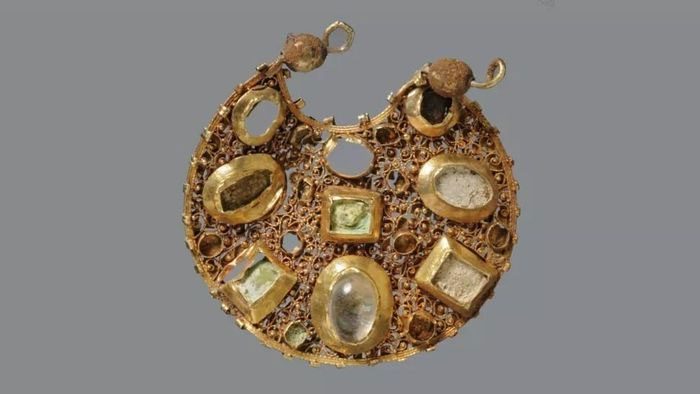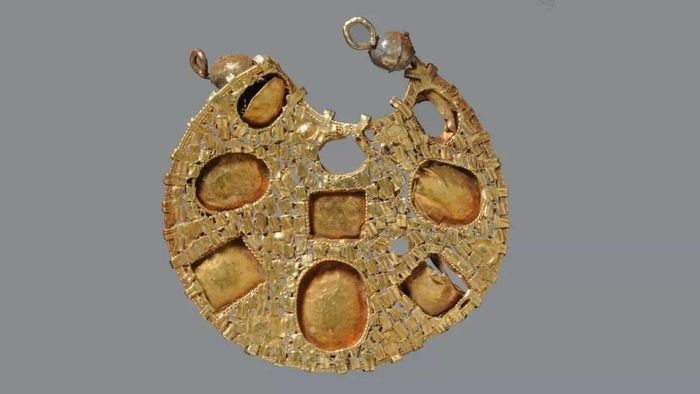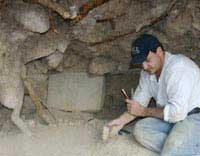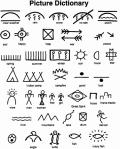The treasure contains a dazzling collection of artifacts, with two gold earrings being the most notable items.
A trainee in northern Germany recently discovered something his mentor never expected: a trove of gold and silver jewelry.

Front view of a gold earring in the Byzantine style recently found in Germany. (Photo: ALSH).

Back view of a gold earring in the Byzantine style found in Germany. (Photo: ALSH).
“The large treasure includes a stunning collection of artifacts consisting of two high-quality gold earrings adorned with semi-precious stones, a brooch made from a gold-plated imitation coin, two gold-plated rings with stones, a fragment of a ring, a small pierced plate that was previously gold-plated, a ring brooch, and about 30 silver coins, some of which are heavily fragmented,” stated Ulf Ickerodt, director of the State Archaeological Office of Schleswig-Holstein (ALSH), in an email to Live Science.
The most remarkable items found are the two earrings. “They may date from around or after the year 1100 and are designed in the style of Byzantine goldsmiths,” Ickerodt said.
According to Ulf Ickerodt, the discovery of these items is very rare in Schleswig-Holstein (Germany), and it is unclear whether these items belonged to individuals or were stolen, whether they were hidden belongings or buried for ritual purposes. “Especially in times of crisis, danger leads to the hiding of possessions,” Ickerodt remarked.
For decades, amateur and professional archaeologists have worked together in the Schleswig-Holstein area, particularly at the UNESCO World Heritage site of Haithabu in Germany. Haithabu was destroyed and abandoned around the year 1066, marking the end of the Viking era in the region.
However, the Haithabu area was not abandoned for long after its destruction in the mid-11th century. Across the Schlei River, Schleswig began to develop into a trade and settlement center. Ickerodt noted: “A vast trade network developed here in a north-south and east-west direction from the early Middle Ages, integrating the Mediterranean region, the North Sea, and the Baltic Sea.”
“The treasure was certainly not placed in this area by chance,” Ickerodt emphasized.




















































